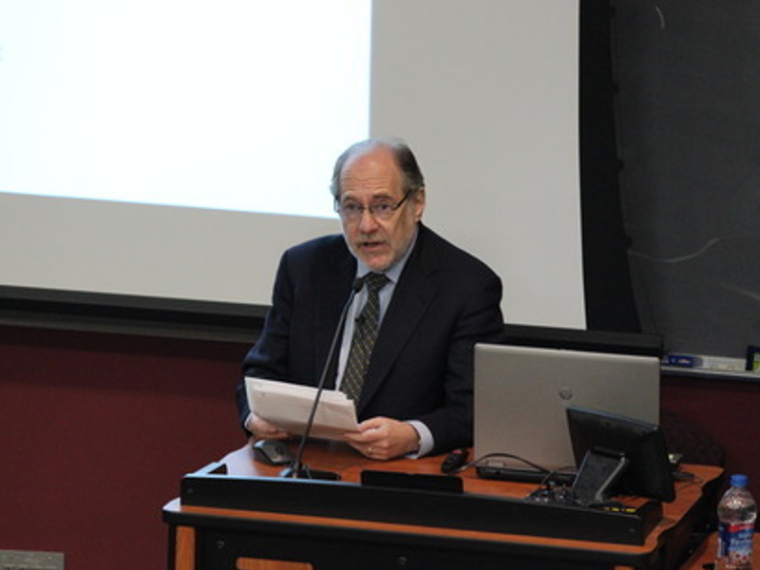Critic and Author Gary Giddins Visits Oberlin for "Picturing Jazz" Talk
Lecture underscores the value of photography in recounting jazz's history.
November 28, 2014
Conservatory Communications Staff

Photo credit: courtesy Conservatory Communications
“There are some writers so prodigious in their output that one suspects that they are actually a whole team of people all creating work under the same pen name. Gary Giddins is one of those writers,” Jeremy Smith, special collections librarian and curator of Oberlin's James and Susan Neumann Jazz Collection, said in introducing Giddins to a packed lecture hall on November 20. The renowned jazz critic and author has “won so many ASCAP-Deems Taylor Awards that they considered renaming the prize the Gary Giddins award,” Smith quipped.
Giddins was in Oberlin to give the Harold Jantz Memorial Lecture on the theme “Picturing Jazz: Jazz and Photography.” Giddins is a fascinating speaker, both in lecture and in conversation. He is a vast repository of knowledge and is more than willing to dispense that information in an accessible, witty manner.
He began his lecture by defending photography as an art form and then talked his way through a trove of photos, positioning “the photographer or portraitist as mythmaker.” In the course of discussing both famous and lesser known photos, he praised jazz for its casual racial integration (“people were afraid of the music because they thought it would bring white and black together, and they were right!”) and related inspiring and fascinating stories about the musicians depicted. The talk more than illustrated his thesis that “photography can enhance your listening and capture a musician better than anything other than a biography.”
During an hour and a half breakfast with six students, Giddins commented on editors, lamented the lack of comprehensive biographies of major jazz musicians, analyzed vocalists from Sinatra to Ella Fitzgerald, recommended songs, books, and documentaries, and explained the development of bebop. He also diagnosed what he perceives as the reasons that jazz suffers from widespread ignorance: race, a tendency to semantically denigrate the music with nonsense labels like bebop, and a lack of exposure to it in schools.
Giddins also recognized Oberlin's own incredible resources. With the recent addition of the papers of legendary bassist Milt Hinton to the already massive Neumann Jazz Collection, he believes that “Oberlin has the potential to be one of the greatest jazz archives in the world.”
You may also like…
Josh Nolan Named Vice President, General Counsel, and Secretary at Oberlin
Distinguished attorney brings extensive experience in higher education law.
Learning by Teaching: Oberlin Students Share Global Music with Young Learners
College and Conservatory students in PACE 103 prepare local children for an immersive community concert at Oberlin.
Nuiko Wadden ’02 Joins Oberlin Conservatory Faculty as Assistant Professor of Harp
The versatile musician brings extensive opera, orchestral, and contemporary music experience to her role


